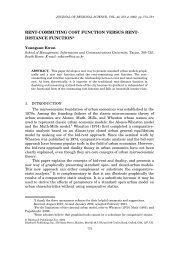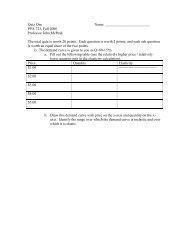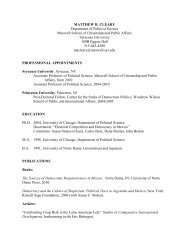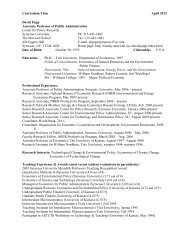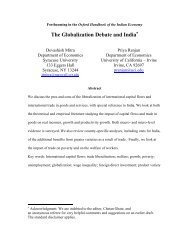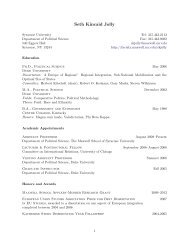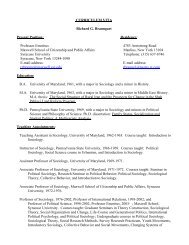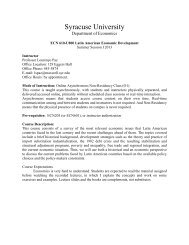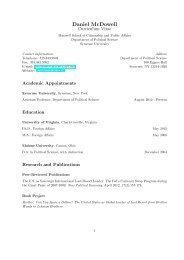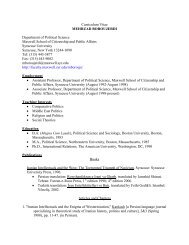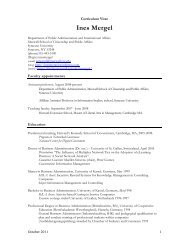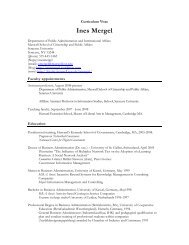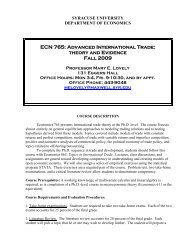The Anbar Awakening - Syracuse University
The Anbar Awakening - Syracuse University
The Anbar Awakening - Syracuse University
You also want an ePaper? Increase the reach of your titles
YUMPU automatically turns print PDFs into web optimized ePapers that Google loves.
Downloaded By: [<strong>Syracuse</strong> <strong>University</strong>] At: 18:08 28 August 2008<br />
<strong>The</strong> <strong>Anbar</strong> <strong>Awakening</strong> | 83<br />
of Iraqi front companies involved in smuggling for the regime. <strong>The</strong> network,<br />
Al-Eman, had numerous al-Gaoud family members in key positions. Sattam<br />
and many of his relatives were also associated with the Iraqi Intelligence<br />
Service. 65 While they have taken to spending much of their time in Jordan<br />
since the fall of Saddam, these al-Gaouds retain both wealth and connec-<br />
tions inside Iraq, including to insurgent groups. 66<br />
This tangled family situation represents the intricacies of just one promi-<br />
nent family in one prominent tribe. As it expands its tribal strategy in Iraq,<br />
the United States will have to manage dozens or even hundreds of these<br />
relationships, leading one intelligence officer in <strong>Anbar</strong> to compare Iraqi<br />
tribal relations to Latin American telenovelas in drama and complexity. 67<br />
Because Washington lacks the detailed knowledge of Iraqi<br />
clans possessed by Saddam, its approach is more like the<br />
British approach of the 1920s. Rather than managing the<br />
tribes, it is simply ceding <strong>Anbar</strong> to them, and potentially<br />
other territories as well. This cession undermines the past<br />
five decades of attempts to build a modern state in Iraq.<br />
<strong>The</strong> third difference between the two strategies is the<br />
relative strength of the Iraqi state. Under Saddam, the<br />
Washington<br />
is simply<br />
ceding <strong>Anbar</strong><br />
to the tribes<br />
state was battered by two decades of war and sanctions, yet it nonetheless<br />
retained significant coercive capability. This was due in no small part to<br />
Saddam’s ruthless willingness to cause civilian casualties and suffering, and<br />
the state’s large numbers of military and security-service personnel backed<br />
by totalitarian intelligence services. On the eve of Operation Iraqi Freedom, for<br />
example, Saddam is estimated to have had about 400,000 military personnel<br />
supplemented by perhaps as many police and security-service members.<br />
In contrast, the current Iraqi government has an authorised military end<br />
strength of 175,000, supplemented by a Ministry of Interior which has over<br />
320,000 personnel on its payroll. Taking these numbers at face value, Saddam<br />
had a 50% advantage in total personnel, and more than double the number<br />
of military personnel. Yet the modern Iraqi military and security services<br />
are in reality nowhere near their authorised strength; indeed the Ministry of<br />
Interior is unable to determine which if any of its 320,000 employees is actu-<br />
ally working. Further, the Iraqi military lacks much of the heavy equipment




